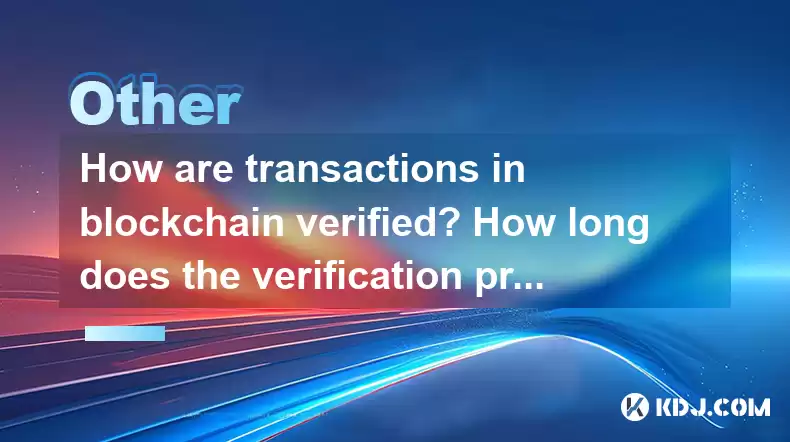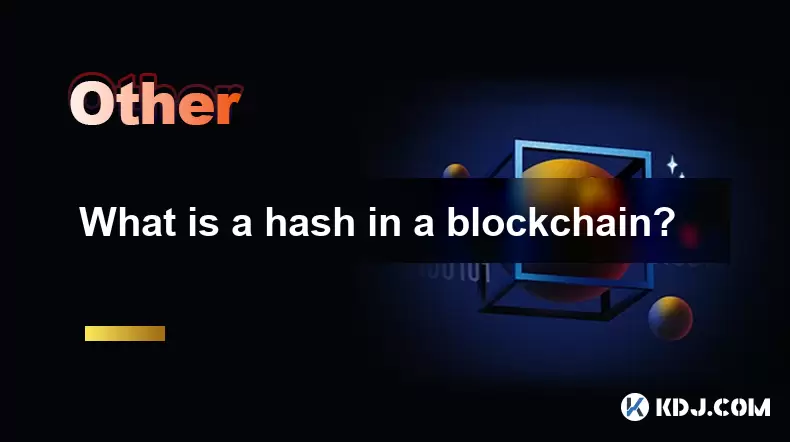-
 Bitcoin
Bitcoin $113900
-1.39% -
 Ethereum
Ethereum $3517
-4.15% -
 XRP
XRP $3.009
1.59% -
 Tether USDt
Tether USDt $0.9997
-0.04% -
 BNB
BNB $766.8
-1.41% -
 Solana
Solana $164.6
-2.38% -
 USDC
USDC $0.9998
-0.02% -
 TRON
TRON $0.3277
0.65% -
 Dogecoin
Dogecoin $0.2023
-1.67% -
 Cardano
Cardano $0.7246
0.05% -
 Hyperliquid
Hyperliquid $38.27
-4.77% -
 Sui
Sui $3.528
-0.52% -
 Stellar
Stellar $0.3890
-0.73% -
 Chainlink
Chainlink $16.16
-2.69% -
 Bitcoin Cash
Bitcoin Cash $539.9
-4.38% -
 Hedera
Hedera $0.2425
-2.00% -
 Avalanche
Avalanche $21.71
-0.97% -
 Toncoin
Toncoin $3.662
5.73% -
 Ethena USDe
Ethena USDe $1.000
-0.02% -
 UNUS SED LEO
UNUS SED LEO $8.964
0.35% -
 Litecoin
Litecoin $107.7
2.33% -
 Shiba Inu
Shiba Inu $0.00001223
-0.40% -
 Polkadot
Polkadot $3.617
-0.97% -
 Uniswap
Uniswap $9.052
-2.49% -
 Monero
Monero $295.1
-3.79% -
 Dai
Dai $0.9999
0.00% -
 Bitget Token
Bitget Token $4.315
-1.85% -
 Pepe
Pepe $0.00001060
0.11% -
 Cronos
Cronos $0.1342
-2.72% -
 Aave
Aave $256.0
-0.87%
How are transactions in blockchain verified? How long does the verification process take?
Blockchain transaction verification involves nodes checking transactions, which are then added to blocks via consensus mechanisms like PoW or PoS, taking seconds to minutes or up to 10 minutes.
Apr 28, 2025 at 02:29 am

Blockchain technology, at its core, is a distributed ledger system that records transactions across numerous computers, ensuring transparency and security through cryptographic means. The verification of transactions within a blockchain is a critical process that maintains the integrity and trustworthiness of the entire network. This article delves into the intricacies of how transactions in blockchain are verified and the time it typically takes for this verification process to occur.
Understanding Blockchain Transaction Verification
The verification of transactions in blockchain is facilitated by a network of nodes, which are essentially computers participating in the blockchain network. Each node maintains a copy of the blockchain and works collaboratively to validate new transactions before they are added to the ledger. The process involves several key steps:
- Transaction Initiation: A user initiates a transaction by sending it to the blockchain network.
- Transaction Broadcasting: The transaction is broadcast to all nodes in the network.
- Verification by Nodes: Each node verifies the transaction to ensure it is valid. This involves checking the digital signatures, the sender's balance, and ensuring the transaction adheres to the blockchain's rules.
- Inclusion in a Block: Once verified, the transaction is grouped with other transactions into a block.
- Consensus Mechanism: The block is then subjected to a consensus mechanism, which varies depending on the blockchain. Popular mechanisms include Proof of Work (PoW) and Proof of Stake (PooS).
- Block Addition: Upon reaching consensus, the block is added to the blockchain, and the transaction is considered verified and complete.
Proof of Work (PoW) and Transaction Verification
In blockchains that use Proof of Work, such as Bitcoin, miners compete to solve complex mathematical puzzles. The first miner to solve the puzzle gets to add a new block of transactions to the blockchain and is rewarded with cryptocurrency. The verification process here involves:
- Transaction Verification: Miners verify the transactions in the proposed block.
- Puzzle Solving: Miners attempt to solve the cryptographic puzzle, which requires significant computational power.
- Block Validation: Once a miner solves the puzzle, the block is broadcast to the network for validation by other nodes.
- Consensus: If the majority of nodes agree that the block is valid, it is added to the blockchain.
The time it takes for a transaction to be verified in a PoW system can vary significantly. On average, a new block is added to the Bitcoin blockchain approximately every 10 minutes. However, the actual time for a transaction to be confirmed can be longer, depending on network congestion and the number of confirmations required.
Proof of Stake (PoS) and Transaction Verification
In contrast, blockchains that use Proof of Stake, such as Ethereum 2.0, select validators based on the number of coins they hold and are willing to "stake" as collateral. The verification process in PoS involves:
- Validator Selection: A validator is chosen based on their stake.
- Transaction Verification: The selected validator verifies the transactions in the proposed block.
- Block Creation: The validator creates a new block and proposes it to the network.
- Consensus: Other validators check the block and, if they agree it is valid, it is added to the blockchain.
The verification time in PoS systems can be quicker than in PoW systems. For instance, Ethereum 2.0 aims to process transactions in seconds to minutes, significantly faster than Bitcoin's 10-minute block time.
Other Consensus Mechanisms and Their Impact on Verification
Beyond PoW and PoS, other consensus mechanisms like Delegated Proof of Stake (DPoS) and Practical Byzantine Fault Tolerance (PBFT) also influence transaction verification times. DPoS, used by blockchains like EOS, allows users to vote for a small number of delegates who are responsible for validating transactions. This can result in very fast transaction verification times, often within seconds.
PBFT, used in some enterprise blockchains, requires a two-thirds majority of nodes to agree on a transaction's validity. This can lead to faster verification times, typically in the range of seconds to minutes, depending on the network's size and configuration.
Factors Affecting Verification Time
Several factors can affect the time it takes for a transaction to be verified in a blockchain:
- Network Congestion: High volumes of transactions can lead to delays in verification.
- Transaction Fees: Higher fees can incentivize miners or validators to prioritize a transaction, leading to faster verification.
- Blockchain Size: Larger blockchains may take longer to process and verify transactions due to the increased data they need to handle.
- Consensus Mechanism: The choice of consensus mechanism directly impacts the speed of transaction verification.
Real-World Examples of Transaction Verification Times
To provide a clearer understanding, let's look at some real-world examples of transaction verification times in different blockchains:
- Bitcoin (PoW): Transactions typically take about 10 minutes to be included in a block, but for higher security, users often wait for multiple confirmations, which can take an hour or more.
- Ethereum (PoW, transitioning to PoS): Before the transition to PoS, Ethereum transactions took around 15 seconds to be included in a block, but full confirmation could take several minutes.
- Ethereum 2.0 (PoS): Post-transition, Ethereum aims to have transactions verified in seconds to minutes.
- EOS (DPoS): Transactions on EOS are typically verified within seconds.
Frequently Asked Questions
Q: Can the verification time of a transaction be influenced by the user?
A: Yes, users can influence verification time by adjusting the transaction fee. Higher fees can incentivize miners or validators to prioritize a transaction, leading to faster verification.
Q: What happens if a transaction is not verified?
A: If a transaction is not verified, it will not be added to the blockchain. The transaction remains in a pending state and may be rebroadcast to the network for another attempt at verification.
Q: Are there any risks associated with faster verification times?
A: Faster verification times can sometimes lead to reduced security, as there may be less time for nodes to detect and reject fraudulent transactions. However, this depends heavily on the specific blockchain and its consensus mechanism.
Q: How does the number of confirmations affect the security of a transaction?
A: More confirmations generally increase the security of a transaction. Each confirmation adds another block to the chain, making it more difficult for an attacker to alter the transaction. For example, in Bitcoin, a transaction with six confirmations is considered highly secure.
Disclaimer:info@kdj.com
The information provided is not trading advice. kdj.com does not assume any responsibility for any investments made based on the information provided in this article. Cryptocurrencies are highly volatile and it is highly recommended that you invest with caution after thorough research!
If you believe that the content used on this website infringes your copyright, please contact us immediately (info@kdj.com) and we will delete it promptly.
- Bitcoin Strategy: Saylor's Not Hoarding, He's Building an Empire
- 2025-08-02 22:30:12
- Bitcoin Bloodbath: Macro Pressures and Liquidations Unleash Crypto Chaos
- 2025-08-02 22:30:12
- Tron, Cold Wallets, and Crypto Trends: What's Hot in the Market?
- 2025-08-02 23:10:12
- Bitcoin's Wild Ride: Davinci, Investors, and the $500K Dream
- 2025-08-02 23:50:12
- Worldcoin, Identity, WLD Price: Decoding the NYC Crypto Buzz
- 2025-08-02 21:10:12
- Shiba Inu: Utility and Community Strength Drive Crypto's Evolution
- 2025-08-02 21:50:12
Related knowledge

What is the difference between on-chain and off-chain transactions?
Aug 02,2025 at 04:22pm
Understanding On-Chain TransactionsOn-chain transactions refer to digital asset transfers that are recorded directly on a blockchain ledger. These tra...

What is the double-spending problem and how does blockchain prevent it?
Aug 02,2025 at 01:07pm
Understanding the Double-Spending ProblemThe double-spending problem is a fundamental challenge in digital currency systems where the same digital tok...

What is the difference between a blockchain and a database?
Aug 01,2025 at 09:36pm
Understanding the Core Structure of a BlockchainA blockchain is a decentralized digital ledger that records data in a series of immutable blocks linke...

How does blockchain handle scalability?
Aug 02,2025 at 02:58pm
Understanding Blockchain Scalability ChallengesBlockchain scalability refers to a network's ability to handle an increasing volume of transactions wit...

What is a hash in a blockchain?
Aug 02,2025 at 05:28am
Understanding the Concept of Hash in BlockchainA hash in the context of blockchain technology refers to a unique digital fingerprint generated by a cr...

What is a hash in a blockchain?
Aug 02,2025 at 04:43am
Understanding the Concept of Hash in BlockchainA hash in the context of blockchain technology refers to a unique digital fingerprint generated by a cr...

What is the difference between on-chain and off-chain transactions?
Aug 02,2025 at 04:22pm
Understanding On-Chain TransactionsOn-chain transactions refer to digital asset transfers that are recorded directly on a blockchain ledger. These tra...

What is the double-spending problem and how does blockchain prevent it?
Aug 02,2025 at 01:07pm
Understanding the Double-Spending ProblemThe double-spending problem is a fundamental challenge in digital currency systems where the same digital tok...

What is the difference between a blockchain and a database?
Aug 01,2025 at 09:36pm
Understanding the Core Structure of a BlockchainA blockchain is a decentralized digital ledger that records data in a series of immutable blocks linke...

How does blockchain handle scalability?
Aug 02,2025 at 02:58pm
Understanding Blockchain Scalability ChallengesBlockchain scalability refers to a network's ability to handle an increasing volume of transactions wit...

What is a hash in a blockchain?
Aug 02,2025 at 05:28am
Understanding the Concept of Hash in BlockchainA hash in the context of blockchain technology refers to a unique digital fingerprint generated by a cr...

What is a hash in a blockchain?
Aug 02,2025 at 04:43am
Understanding the Concept of Hash in BlockchainA hash in the context of blockchain technology refers to a unique digital fingerprint generated by a cr...
See all articles

























































































